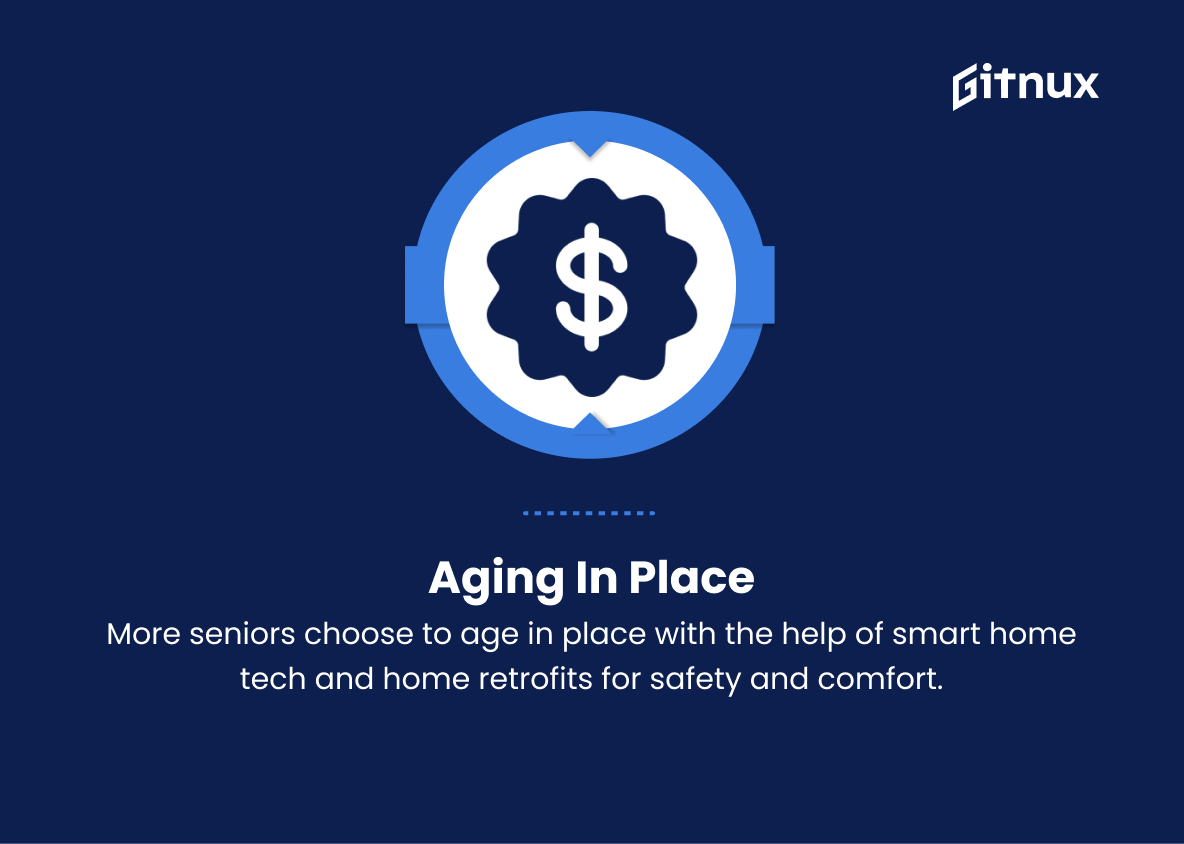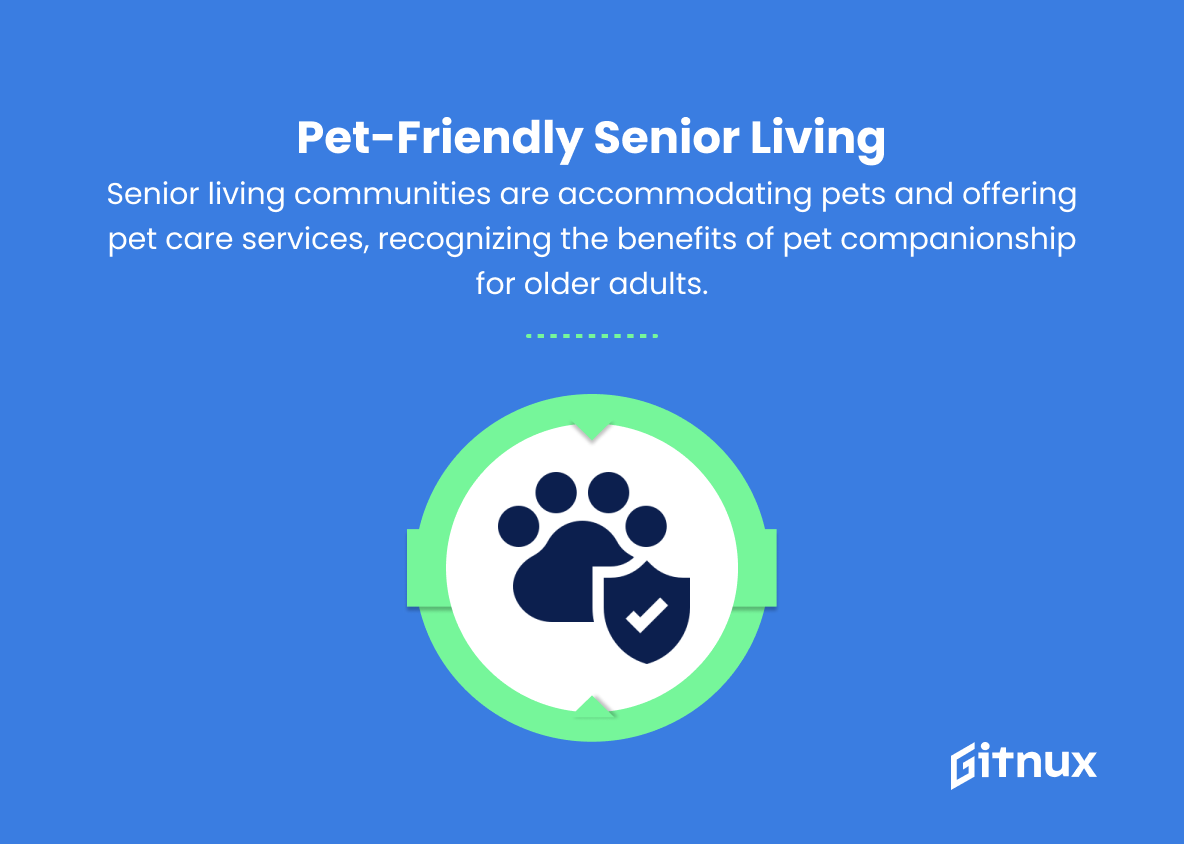Navigating the ever-evolving landscape of senior living can be a daunting task for individuals and their families as they seek to understand the latest trends and options available. As our population ages and the baby boomer generation enters their golden years, the demand for senior living solutions has never been greater. In this informative blog post, we delve into the most significant senior living trends shaping the industry today.
From innovative care models and cutting-edge technologies to comprehensive wellness programs and changing societal attitudes, we examine how these developments offer valuable insights and guidance to make informed decisions for our seniors’ well-being, comfort, and happiness. Join us as we explore the future of senior living and how embracing these trends can result in a more fulfilling and satisfying aging experience.
Top Senior Living Trends
1. Aging in place
More seniors are opting to age in place, utilizing smart home technologies, and home retrofitting to create a safe and comfortable environment in their current residences.
2. Co-housing/Intergenerational living
Seniors are increasingly choosing to live communally with individuals of different age groups to encourage social interaction, shared responsibilities, and skill exchanges.
3. Green and sustainable living
Eco-friendly senior living facilities and homes are increasingly in demand, featuring energy-efficient designs, sustainable materials, and integrated green spaces.
4. Telemedicine and remote healthcare
Advances in technology allow seniors to access healthcare services and receive ongoing support from healthcare professionals remotely, improving their access to care and reducing the need for in-person visits.
5. Wellness-focused amenities and programs
Senior living communities are increasingly offering holistic wellness programs, including exercise classes, mental health support, and recreational activities that promote overall well-being.
6. Smart homes and IoT devices
Integration of Internet of Things (IoT) devices and smart home technologies enable seniors to maintain independence while ensuring safety, security, and a high quality of life.
7. Personalized care options
Tailored care plans that focus on individual needs and preferences, rather than a one-size-fits-all approach, are increasingly becoming the norm in senior living communities.
8. Increased focus on mental health
Senior living facilities are placing a greater emphasis on providing mental health support services, addressing the unique challenges faced by older adults, such as loneliness, depression, and anxiety.
9. Lifelong learning opportunities
Continuing education and lifelong learning programs are being implemented in senior living communities to keep older adults mentally engaged, up-to-date with new technologies, and to promote personal growth.
10. Accessible and age-friendly design
Senior living spaces are being designed with accessibility and age-friendly features in mind, such as wider doorways, non-slip flooring, and easy-to-reach appliances.
11. Transportation options
Senior living communities are increasingly offering transportation options to help older adults maintain their mobility, social connections, and independence.
12. Pet-friendly senior living
Recognizing the benefits of pet companionship for older adults, many senior living communities are beginning to accommodate pets and even offer pet care services.
13. Work-friendly environments
More seniors are choosing to work or volunteer during their retirement years. As a result, senior living facilities are increasingly offering workspaces, computers, and internet access to accommodate this trend.
14. Cultural, religious and LGBTQ-friendly communities
Senior living communities are becoming more inclusive, catering to the diverse cultural, religious, and LGBTQ+ backgrounds of older adults.
15. Virtual reality and gaming
The use of virtual reality and gaming technology in senior living facilities is growing, offering opportunities for socialization, cognitive stimulation, and access to new experiences.
Implications
The modern landscape of senior living is experiencing a shift towards a more personalized, inclusive, and technologically advanced approach. As the demand for aging in place rises, smart home technologies and home retrofitting have become essential for creating safe, comfortable environments that support seniors’ independence. This has led to a growing interest in co-housing and intergenerational living, where seniors share their living spaces with people of different age groups, forging deep connections and exchanging skills.
Emphasizing green living, these communities feature innovative designs that promote energy efficiency, sustainability, and overall well-being.
To further enhance the quality of life for seniors, telemedicine and remote healthcare have become indispensable, allowing for better access to healthcare services while reducing the need for in-person visits. This shift is complemented by the rise of wellness-focused amenities and programs, personalized care options, and an increased focus on mental health.
Senior living communities are also incorporating lifelong learning opportunities, accessible designs, and a variety of transportation options for their residents. Inclusivity is another key component, with pet-friendly arrangements, work-friendly environments, and accommodations for diverse cultural, religious, and LGBTQ+ backgrounds being increasingly available.
Lastly, the integration of virtual reality and gaming technology into senior living communities demonstrates a commitment to digital advancements, offering new experiences that not only provide cognitive stimulation but also foster social interactions among residents. Altogether, these trends point towards a vibrant, innovative future for senior living, where the emphasis is on creating individualized experiences that cater to the unique needs of each senior.
Conclusion
In conclusion, the evolving trends in senior living are indicative of a society that acknowledges and values the experiences, independence, and desires of its aging population. From technological advances and innovative housing designs to holistic wellness programs and redefined retirement paradigms, the world of senior living is being transformed to offer tailored solutions for our elderly.
As we continue to witness these changes, it is crucial to stay informed and adapt to create a vibrant, supportive, and engaging environment for all seniors, empowering them to embrace their golden years with dignity, joy, and purpose.















